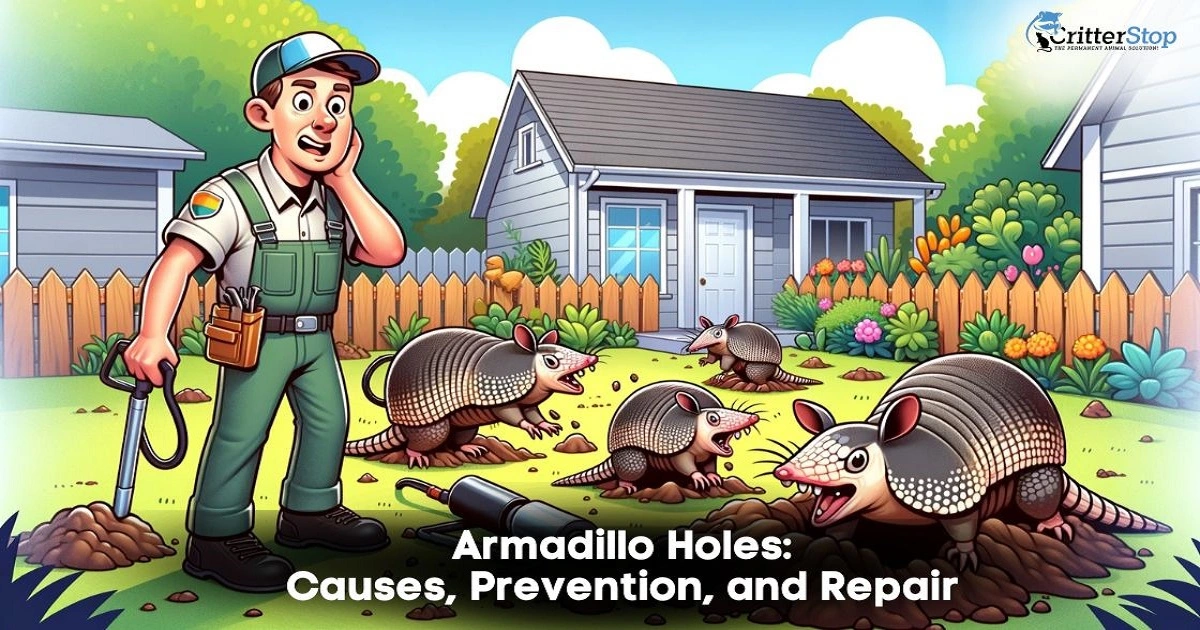
Armadillo holes are a common sight in many parts of the world, especially in the southern United States. This critter creates these holes as it searches for food and shelter. This unique animal is known for its protective armor and ability to dig holes. Armadillos burrow not only to find food but also to seek shelter from weather, protection from predators, and a place to raise their young, although they don’t tend to store large amounts of food in their burrows.
The armadillo is a nocturnal animal that spends most of its time searching for food. With a keen sense of smell, it can detect insects and other small animals hidden underground. When the armadillo finds its prey, it uses its powerful front claws to dig through the soil and create a hole. These holes can be quite large and can damage lawns and gardens.
Despite their destructive nature, armadillo holes provide important benefits to the ecosystem. The holes create habitats for other animals, such as snakes, lizards, and small mammals. They also help to aerate the soil and improve drainage. However, if armadillos are causing damage to your property, there are steps you can take to deter them from digging.
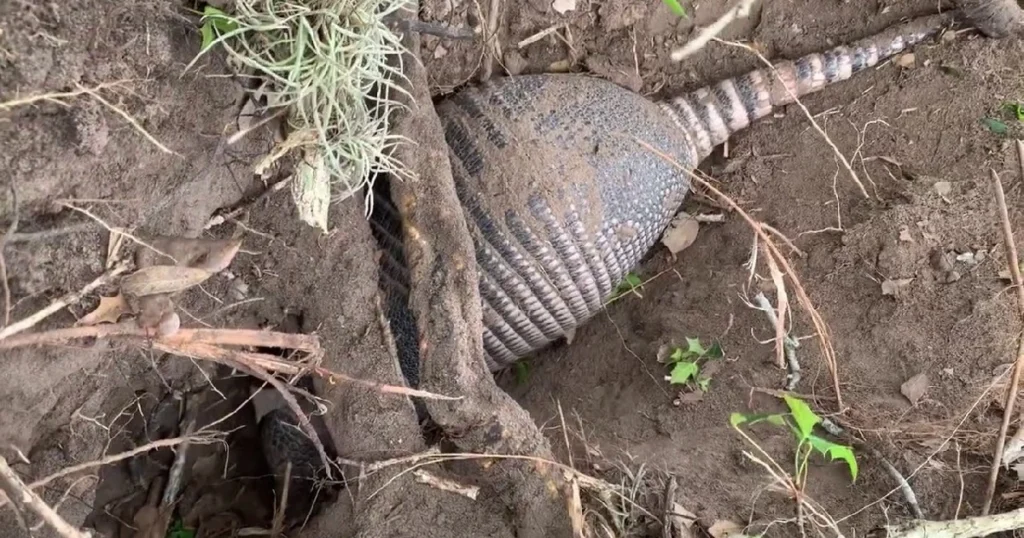
Armadillos are wild animals known for their unique burrowing habits and are often seen digging holes in residential areas. Understanding why armadillos dig holes can help homeowners prevent damage to their property and keep these animals at bay.
Armadillos are natural burrowers and are known to dig extensive underground burrows for shelter and protection. An armadillo burrow can be up to 25 feet long and 6 feet deep, with multiple entrances and exits. Armadillos use these burrows to escape predators, regulate their body temperature, and raise their young.
Armadillos are most active at night. They use their sharp claws to dig holes in search of the foods they like, such as grubs, insects, and earthworms. These holes can be 3-5 inches in diameter and several inches deep. The nine banded armadillo digs holes to get water during dry spells.
Utilizing armadillo traps is a humane method to manage these critters, especially for those concerned about the integrity of their landscapes. It's crucial to select the right size and structure for the cage traps and to check local wildlife laws before proceeding. This ensures the safe and legal relocation of the armadillos. However, it's important to remember that armadillos can be dangerous, posing risks of injury from their struggles and the potential transmission of diseases such as leprosy and rabies to humans.
Armadillos are omnivores and feed on various insects, plants, and small animals. Their powerful sense of smell can detect food underground using their sharp sense of smell. Gardens, lawns, and flowerbeds attracts armadillos, causing damage to plants and flowers.
Homeowners can take several measures to prevent armadillos from digging holes in residential areas. One effective method is to install physical barriers, such as a fence or a cage trap, around the property. Another method is to remove potential food sources that attract armadillos, such as insects and grubs, from the lawn and garden.
In conclusion, armadillos dig holes for several reasons, including burrowing for shelter and protection, foraging for food, and searching for water. Understanding their behavior and habits can help homeowners prevent damage to their property and keep these animals at bay.
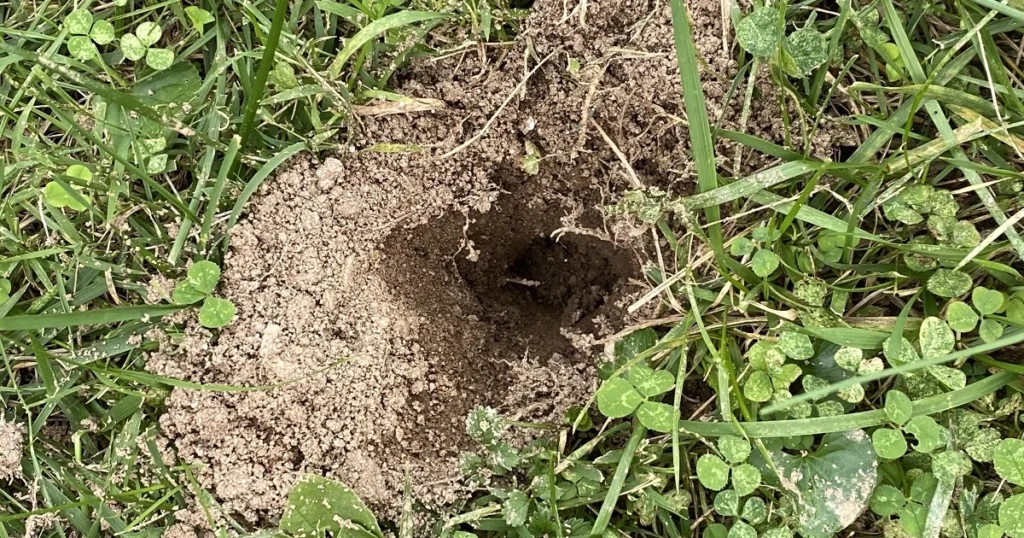
Armadillos are known for their unique burrowing habits, which can cause significant damage to lawns and gardens. Identifying armadillo holes is crucial to prevent further damage and take appropriate measures to control their activity. Now, we are going to discuss the visual characteristics of armadillo holes and provide an armadillo burrow diagram to help you identify their burrows.
Armadillo holes are typically 3 to 5 inches in diameter and 1 to 3 inches deep. One burrow is usually shaped like a cone or a half-moon and has loose, fluffy soil around the edges. The holes are often found in groups and are up to 25 feet in diameter.
One of the most distinctive characteristics of armadillo tunnels is their shape. The cone-shaped holes are created when the armadillo uses its powerful front legs to build burrows. The half-moon shape is formed when the armadillo pushes the soil out of its way as it burrows underground.
Armadillo burrows are complex systems of tunnels and chambers that can extend up to 25 feet underground. The burrows are used for sleeping, nesting, and raising young and can also provide protection from predators and extreme weather conditions.
The armadillo burrow diagram below illustrates the basic structure of an armadillo burrow. The entrance hole is typically the largest and is used for entering and exiting the burrow. The main tunnel leads to a nesting chamber, where the armadillo sleeps and raises its young. The secondary tunnels are used for foraging and escaping predators.
In conclusion, identifying armadillo holes is essential to prevent further damage to your lawn and garden. By understanding the visual characteristics of armadillo holes and using the armadillo burrow diagram, you can identify their burrows and take appropriate measures to control their activity.
Armadillos are known for their burrowing habits, which can damage properties. The little holes may not seem like much, but plenty of them can damage underground pipes and other utilities. The effects of armadillo burrowing under your house can range from mild to severe, depending on the extent and construction. Additionally, armadillo burrow entrances can often be found near brush piles, highlighting the importance of monitoring these areas for signs of armadillo activity. Here, we will discuss armadillo holes on property and how they can be prevented.
Armadillos dig holes in search of food, which can result in unsightly holes in yards. These holes can be dangerous for people and pets, as they can cause tripping hazards. In addition, armadillo holes can damage lawnmowers and other lawn equipment. This armadillo problem can also affect vegetable gardens, golf courses, and flower beds. It’s important these holes are promptly filled to prevent further damage to the property.
The best mix for filling armadillo holes in the yard is soil and sand. This will create a stable base while preventing the hole from collapsing. It is also important to compact the soil mixture to ensure that it is stable and does not sink over time.
The armadillo is a wild animal known to burrow under structures such as houses and sheds. They remove rock piles and dirt, which can damage the foundation and lead to costly repairs. In addition, armadillo burrowing can cause the structure to become unstable, which can be dangerous for the occupants.
Barriers should be installed around the perimeter to prevent armadillos from burrowing under structures. This can include burying wire mesh or hardware cloth around the foundation of the structure. Make sure there are no gaps or openings in the foundation that could allow armadillos to enter.
In conclusion, the effects of armadillo holes on property can be significant. The soil type of your property also determines how these critters affect it. It’s important to take steps to prevent armadillos from burrowing on your property and to fill holes promptly to prevent more damage. Once you take these steps your property can remain safe and secure.

Armadillos are known for digging holes in yards and gardens, which can be unsightly and dangerous. One effective and humane method for capturing and relocating these critters is using armadillo traps. These cage traps, designed specifically for armadillos, should be chosen with care to ensure they are of the appropriate size and structure. It's also important to check state wildlife laws and consider involving local wildlife removal agencies for safe relocation. Here are some tips for dealing with armadillo holes.
If an armadillo has dug a hole in your yard, you may wonder how to fill it. One option is to fill the armadillo hole with water and wait for it to soak in. Once the process is finished, you can fill the hole with dirt and pack it down with a shovel. This will help prevent the armadillo from digging in the same spot again.
Another option is to use a shovel to remove loose dirt and debris from the hole. Then, fill the hole with dirt and pack it down with a shovel. You will have to add more dirt to ensure the hole is completely filled.
Preventing armadillos from digging in your yard is the best way to avoid dealing with armadillo holes. Here are some tips for deterring armadillo digging:
Remember, it's important to be patient when dealing with armadillos. They are persistent creatures and may take some time to deter or remove from your yard. If you're having trouble, consider contacting a professional wildlife removal service for assistance.
Armadillos are known for their unique ability to dig burrows in the ground and their protective armor. These burrows serve as shelter for the armadillo, protecting it from predators and extreme weather conditions. However, armadillo burrows also significantly impact the ecosystem.
It's also noteworthy that armadillos can carry rabies, which underscores the importance of cautious interaction with these animals due to potential health risks. However, the likelihood of them transmitting rabies is not greater than other wild animals such as possums, rats, and rabbits.
Armadillo burrows are typically 7-8 inches in diameter and can be up to 15 feet long. The burrows are usually dug in areas with soft soil, such as woodlands, grasslands, and even suburban neighborhoods. Armadillos are known for their ability to dig quickly, and they can create complex tunnel systems with multiple entrances and exits.
Most armadillo burrows have two entrances, which allows the armadillo to escape quickly if a predator enters the burrow. The burrows also have a main tunnel that leads to a nesting chamber, where the armadillo sleeps and raises its young.
Armadillo burrows significantly impact the ecosystem. They provide shelter for various animals, including snakes, rabbits, and other small mammals. These animals use the burrows to hide from predators and to sleep.
Armadillo burrows also help to aerate the soil, which promotes the growth of plants and other vegetation. By stabilizing the ground, the burrows can also help prevent soil erosion.
However, armadillo burrows can also cause damage to property and infrastructure. The burrows can weaken the ground, which can cause sidewalks, driveways, and even buildings to collapse. In addition, the burrows can create hazards for livestock and other animals that may step into them and injure themselves.
Overall, armadillo burrows play an important role in the ecosystem, providing shelter and promoting the growth of vegetation. However, they can also cause damage and pose hazards to humans and animals. It is important to be aware of armadillo burrows and take appropriate measures to prevent damage and injury.
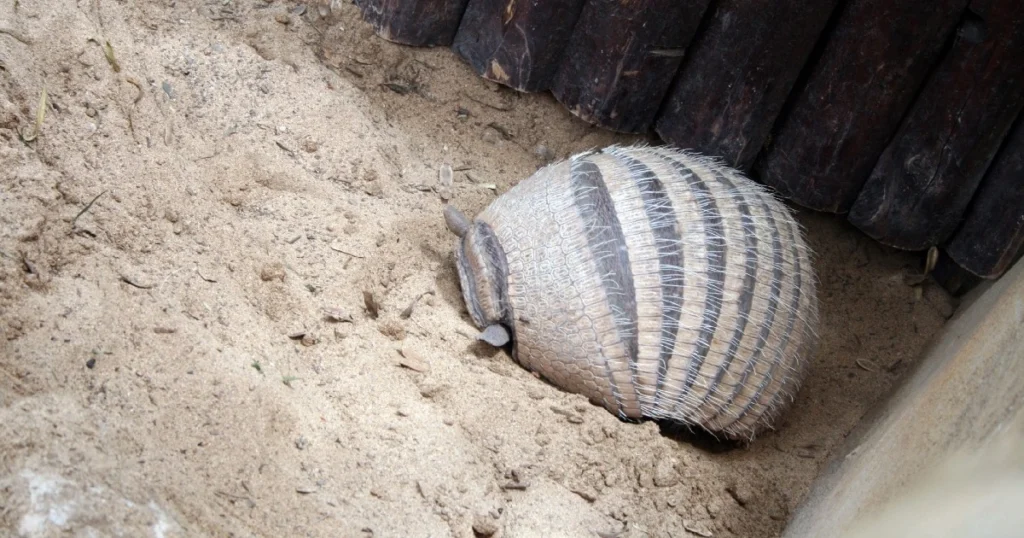
Armadillos are known for digging holes in yards, which can be unsightly and potentially damaging to plants. Fortunately, there are several methods for preventing armadillo damage.
One way to deter armadillos from digging holes in your yard is to make the area less appealing to them. This can be achieved through landscaping solutions such as:
Another option for preventing armadillo damage is to use physical or chemical repellents. Some options include:
It is important to note that while these methods can be effective, they may not completely eliminate armadillo activity in the area. If armadillos continue to be a problem, it may be necessary to seek professional wildlife removal services.
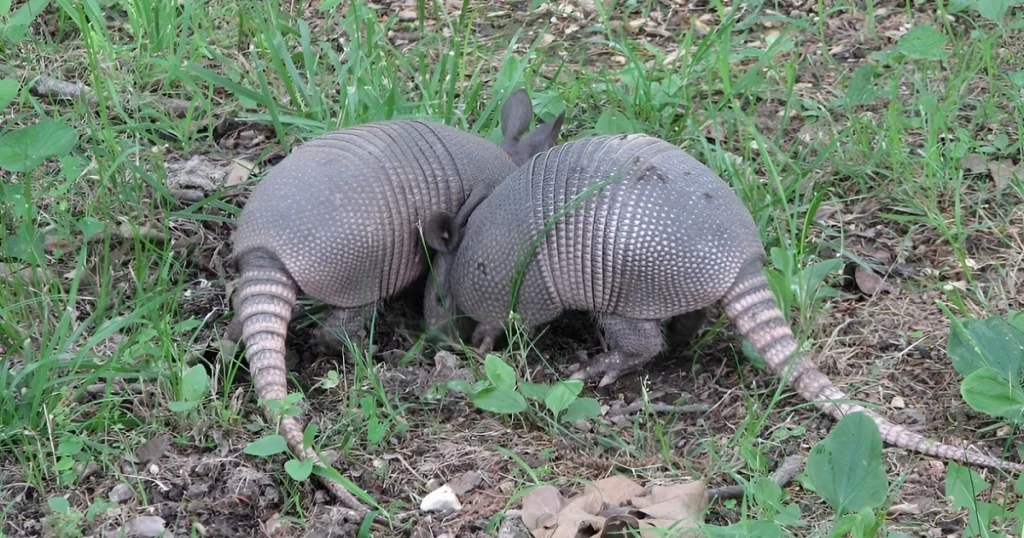
Dealing with armadillo holes in your lawn can be frustrating and time-consuming. If you've tried various methods to eliminate these pesky creatures without success, it may be time to call in the professionals. Critter Stop is a humane wildlife removal company that can help you with your armadillo problem.
Critter Stop has a fantastic reputation, and customer reviews online because it provides high-quality work and great customer service. Their team of experts is trained to handle armadillo removal from property safely and humanely. They use the latest techniques and equipment to ensure that the armadillos are removed quickly and efficiently.
When you call Critter Stop at (214) 234-2616, they will send a team to your property to assess the situation. They will then develop a customized plan to remove the armadillos and prevent them from returning. This may involve trapping and relocating the armadillos, sealing off any entry points, and installing barriers to prevent future infestations.
One of the benefits of hiring Critter Stop is that they offer a warranty on their work. This means that if the armadillos return within a certain period of time, they will return to your property and remove them again at no additional cost to you.
In addition to armadillo removal, Critter Stop offers a range of other wildlife removal services, including squirrel, raccoon, bat, and more. They also offer prevention services to help keep your property free from wildlife infestations.
If you're dealing with armadillo digging holes in your yard, don't hesitate to call Critter Stop. Their team of experts can help you get rid of these pesky creatures and prevent them from returning. Visit their website at www.critterstop.com to learn more about their services and schedule an appointment.
Armadillo holes are a common sight in many yards and gardens. Here are some frequently asked questions about armadillo burrows:
There are many myths surrounding armadillo burrows. Here are some common ones, along with the facts:
If you have armadillo holes in your Dallas yard, it's important to discourage the armadillos from digging. This can include using fencing or repellents or simply filling in the holes as soon as you notice them. By taking action early, you can prevent further damage to your yard or garden.
Several methods can be used to remove armadillos from your property. These include trapping, exclusion, and repellents. Trapping involves setting up a trap that will capture the armadillo. Exclusion involves blocking off the areas where the armadillo is entering your property. Repellents can be used to deter armadillos from entering your property in the first place. It is important to note that armadillos are protected in some areas, so it is important to check local regulations before attempting to remove them.
Armadillo burrows are typically larger and more irregularly shaped than mole burrows. They are also usually deeper and have several entrances and exits. Mole burrows, on the other hand, are typically smaller and more uniform in shape, with a single entrance and exit.
Armadillo burrow depth can vary in size, but they are typically around 7-8 inches in diameter and can be up to 25 feet long. The burrows are usually around 2-3 feet deep but can be deeper in some cases.
Yes, armadillo burrows typically have two entrances for easy access and escape. This design allows armadillos to quickly enter and exit their burrows, providing them with a sense of security and flexibility in their underground homes. Having two entrances also helps to improve ventilation and prevent the buildup of harmful gases within the burrow.
It’s recommended that armadillo burrows be filled to prevent other animals from using them and to prevent potential safety hazards. To fill the burrow, the hole should be filled with soil and tamped down to make it firm. Ensure the soil is compacted to prevent the hole from collapsing.
The signs of armadillo burrows include holes in the ground that are around 7-8 inches in diameter and are usually surrounded by loose soil. Armadillos also leave distinctive three-toed footprints in the soil.
Armadillos excavate holes and burrows for several reasons. They use the burrows for shelter and protection from predators and extreme weather conditions. Armadillos are also known to excavate holes in search of food, such as insects and grubs.
Visit our Critter Library and learn more about our furry friends